You won't believe how easy these flowers are to grow – 9 fail-safe bulbs for dazzling color and guaranteed blooms
Zero stress bulbs for joyful flowers year after year
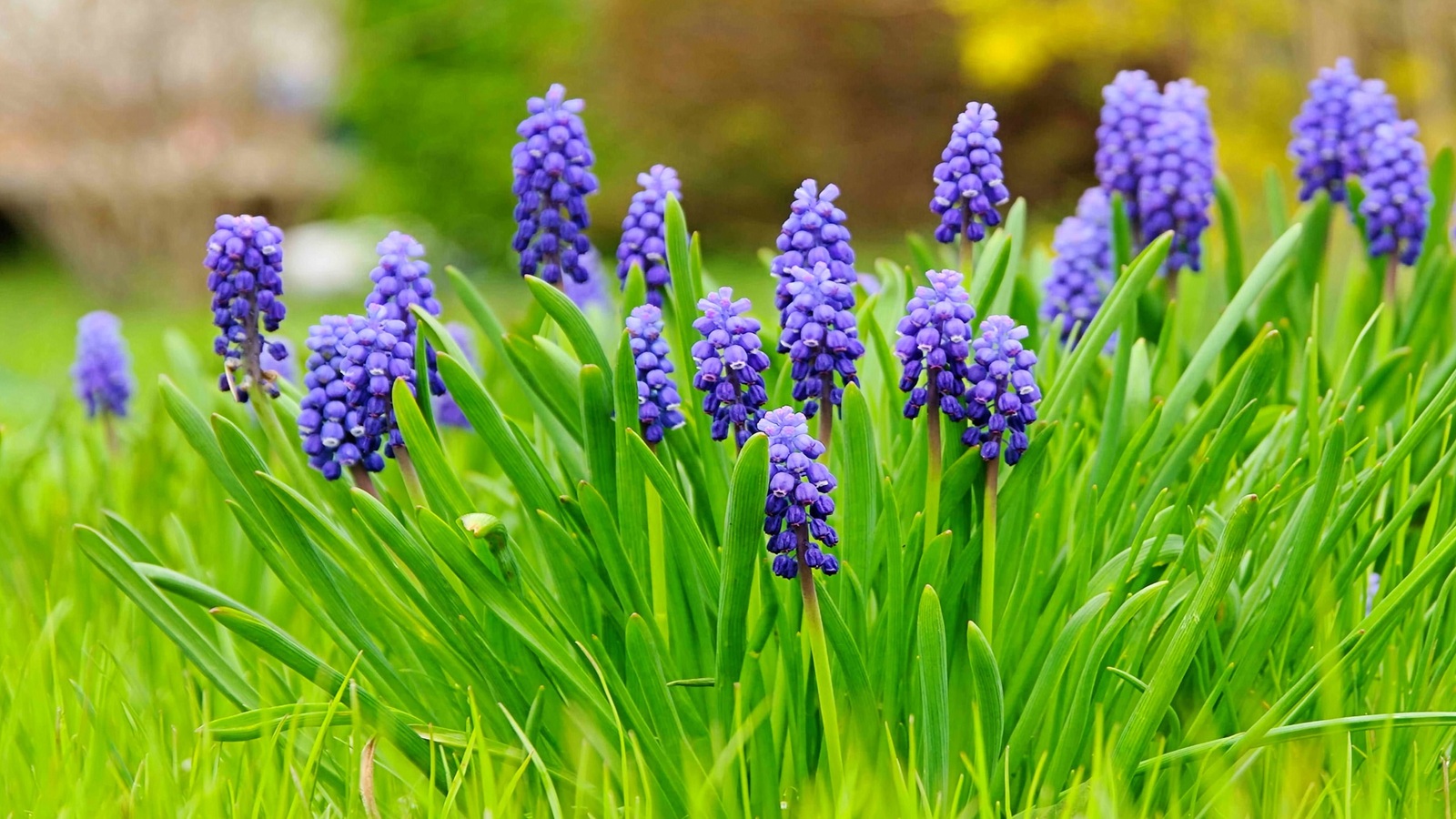

You can’t beat bulbs for maximum charm and minimum effort, and there are some floral superstars that are virtually non-fail and all novice gardeners should grow.
From the earliest spring bulbs, such as snowdrops, crocus and muscari, to the flamboyant summer blooms of the rain lily, crinium and gladioli, there are plenty of easy-to-care-for flower bulbs that can simply be planted in fall or spring and left to look after themselves
As long as you are not planting in wet or waterlogged soil, most bulbs will happily flower, at least for a single season, if not more. Naturalizing them in lawns is a popular bulb planting trend, and if chosen carefully will multiply each year, giving you and local pollinators more blooms to enjoy. Here are our top nine fail-safe bulbs for dreamy blooms.
Botanical tulips
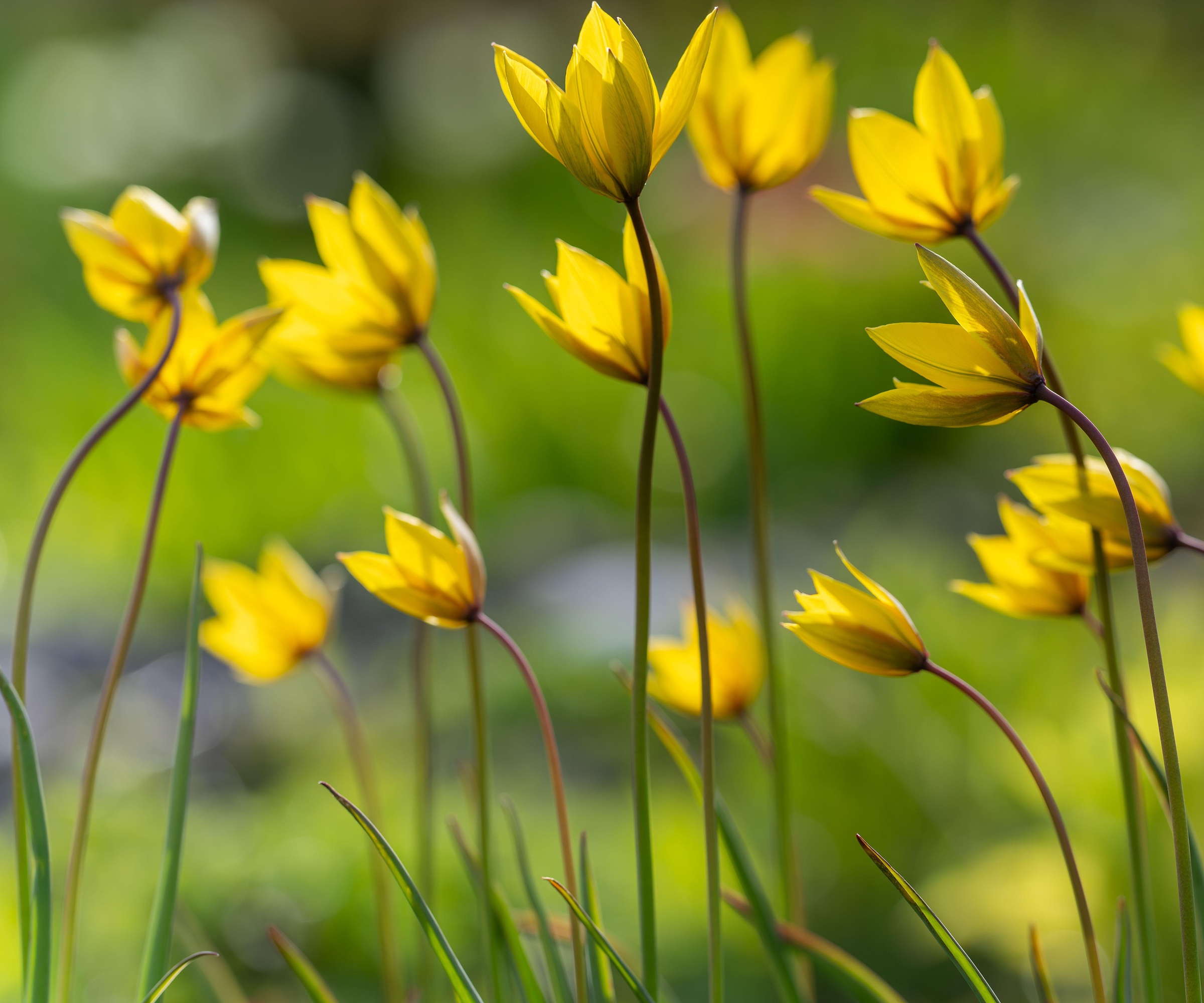
‘Not all tulips are perennial and that can cause disappointment for new gardeners,’ says horticultural expert Peggy Anne Montgomery. ‘Four different types are considered perennial: Darwin hybrid, Waterlily or Kaufmanniana, Fosteriana aka Emperor tulips, and my own personal favorite Species tulips. All beautiful and worthy additions to any garden.
'I’m particularly fond of species tulips like Tulipa sylvestris, the woodland tulip. It’s an heirloom tulip from the 16th century, made popular in this country by Thomas Jefferson at Monticello. Incredible easy to grow. I have them in my bulb lawn and when they are in bloom the fragrance is pure delight.’
Species tulips are particularly well-suited to naturalizing. Super low maintenance, tolerant of poor soil, they thrive almost anywhere and multiply well. Their short stems grow to around 5-10” tall (12.7-25.4cm) and have a delicious fragrance too. Plant them in large numbers for an impressive display.
Peggy adds, ‘Don’t let their diminutive size fool you; they’re tough and their short stems stand up to spring wind and storms.’
You can mind multipacks of species tulips bulbs at Amazon.

Peggy Anne Montgomery is a horticultural professional with more than 30 years of US and international experience in garden marketing and communications. An account executive for the Garden Media Group, she currently represents Dutch Royal Anthos, a trade organization for Dutch bulb growers and exporters in the US and Canada.
Alliums
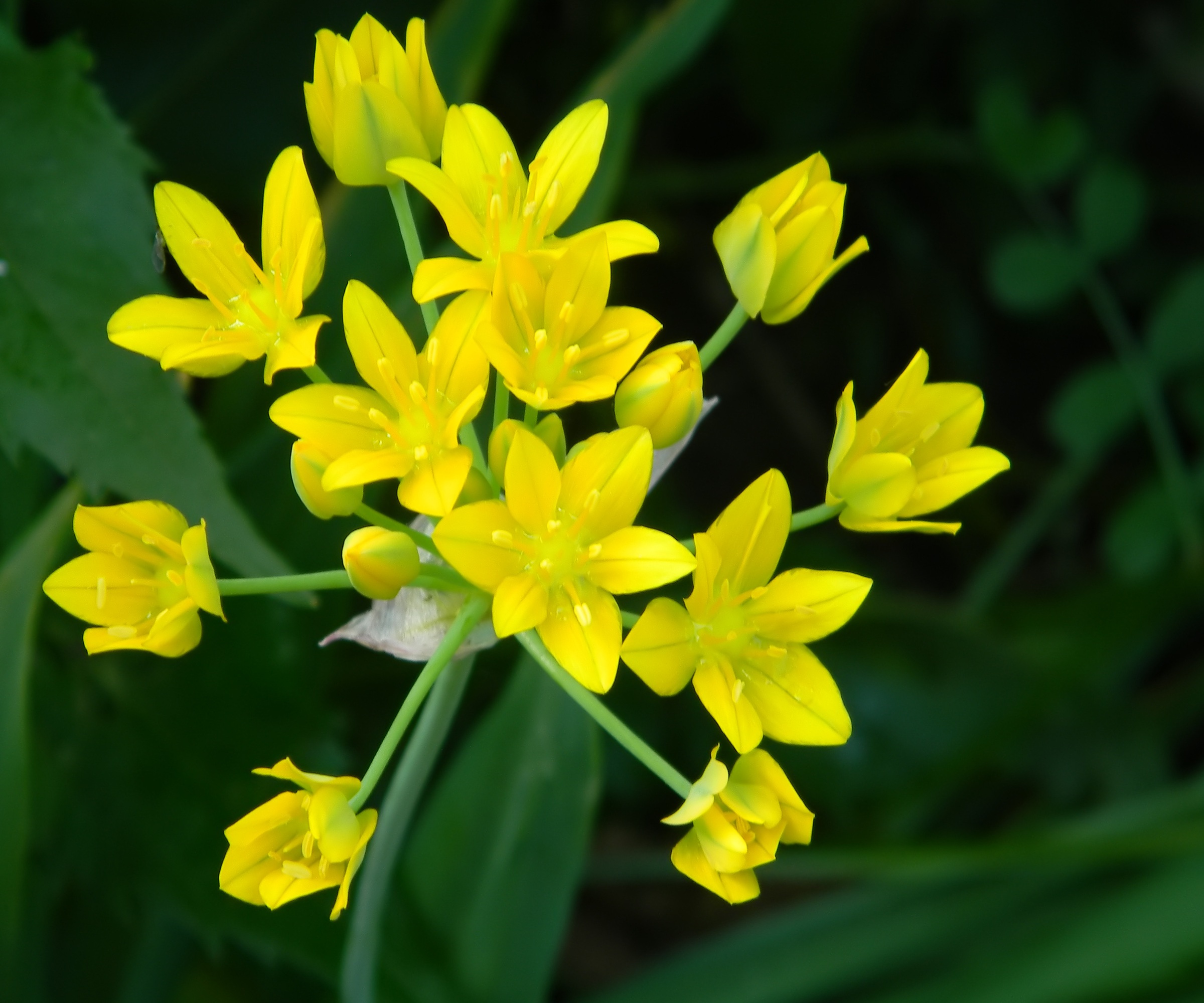
Instantly recognisable and adored by designers of both contemporary and English cottage style gardens, alliums are serious headturners. Whether they are planted in borders, wild-style amongst long grass or clustered together in pots and planters they are pretty well natured and easy to grow. But garden centre owners and bulb specialists have noted that some types of flowering onion are more reliable than others.
'Most allium are perennial if grown in proper conditions, and winter hardy,’ says Peggy Anne Montgomery. ‘However, I do notice that after several years the number of blooms can decline on tall types. Many of the smaller types are reliably perennial.’ These include the starry yellow Allium Moly, the rose-pink Allium Oreophilum and delicate snow-white Allium Cowanii.
‘If they have one downside, it’s that the basal foliage comes up early and can turn brown before the flowers bloom,’ notes Peggy Anne. ‘I plant mine with Japanese painted fern, or hosta to hide the brown foliage and provide interest in the summer and fall garden. I’ve noticed that Allium ‘Purple Rain’ foliage doesn’t turn brown. While Drumstick allium and ‘Purple Sensation’ will often produce seed to increase their numbers.’
Early crocus
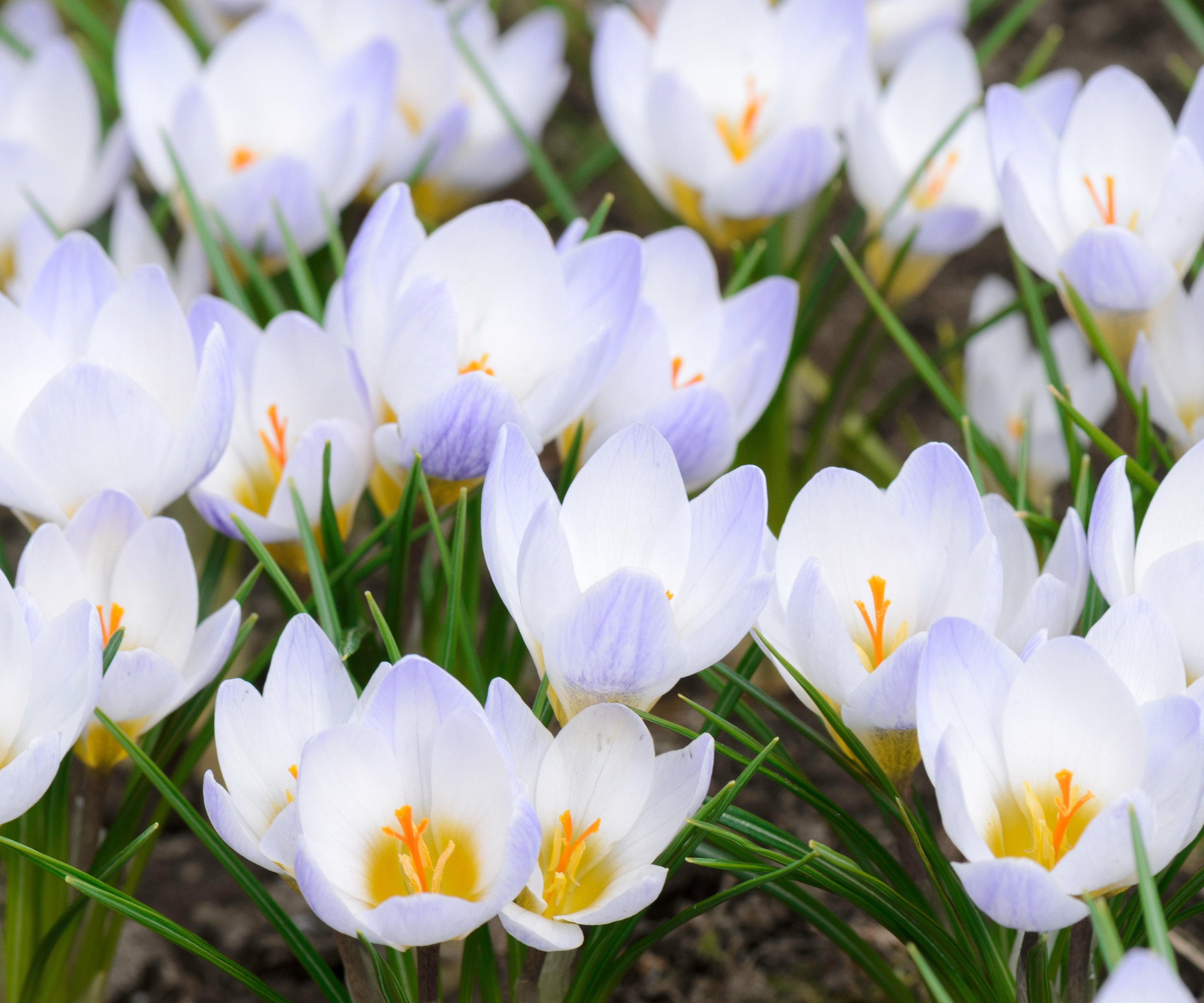
Early harbingers of spring, nothing quite lifts the mood than coming across a carpet of cheery crocus. These tiny bulbs or corms are often found clustered together below trees and shrubs but also put on a brilliant show in window boxes and high-level planters. There are many different types of crocus to tempt you, but some varieties are more reliable than others.
‘Crocus tommasinianus and some of the Species crocus can be a little finicky about soil etc, but the larger flowering varieties are easy to grow,’ says Peggy Anne. ‘Crocus chrysanthus, or snow crocus, are one of the easiest. They flower earlier than Dutch hybrids and naturalize by offsets and self-seeding, forming large drifts over time.
'Crocus vernus, often called Dutch crocus and their hybrids often - noted as giant crocus in catalogs - are also easy to grow, naturalize readily and have bigger flowers.’
Mix them with daffodils and narcissi for a bright and breezy display. The bold color contrast and different height stems adding plenty of interest and drama to any bed or border.
Poet’s daffodil
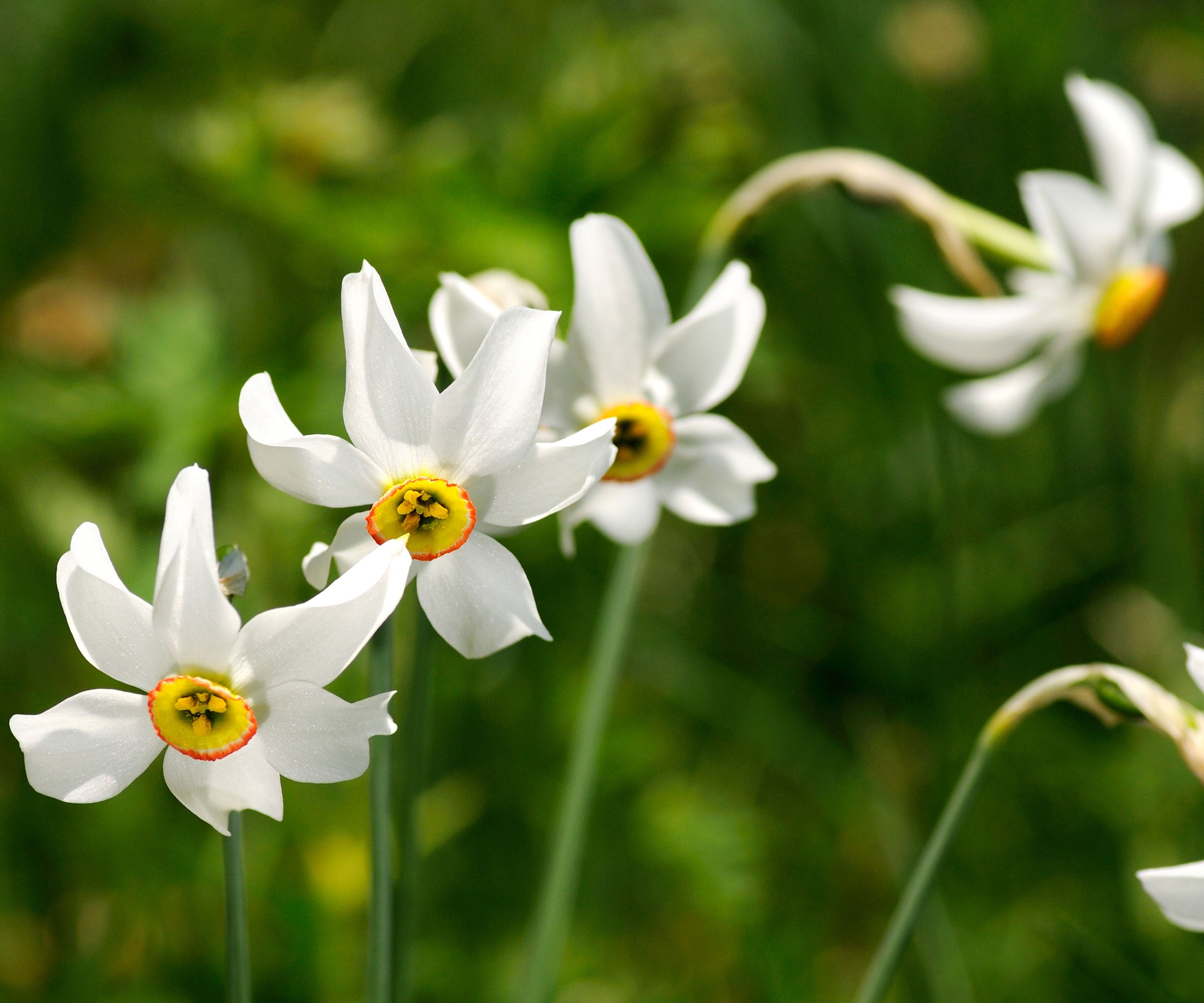
Considered one of the most resilient and low maintenance daffodils you can grow, these classic blooms with their tall, slender stems are instantly recognisable for their pale single blooms surrounding a delicately ringed centre or corona.
Appearing later than most other daffodils, Narcissus poeticus is one of the best bulbs for naturalizing and often found peppering lawns and grassy banks. They are also an valuable food source for early pollinators.
Happy in full sun or part shade, there’s very little that prevents these robust yet elegant blooms from thriving. ‘The only thing they won’t tolerate is wet soil,’ says Peggy Anne Montgomery. ‘They are truly perennial and multiply year after year. With outstanding disease resistance, they are rarely bothered by pests or diseases and are naturally deer, rabbit, squirrel, and vole resistant too.’
You can find poet's daffodil bulbs available from Amazon.
Canna lily
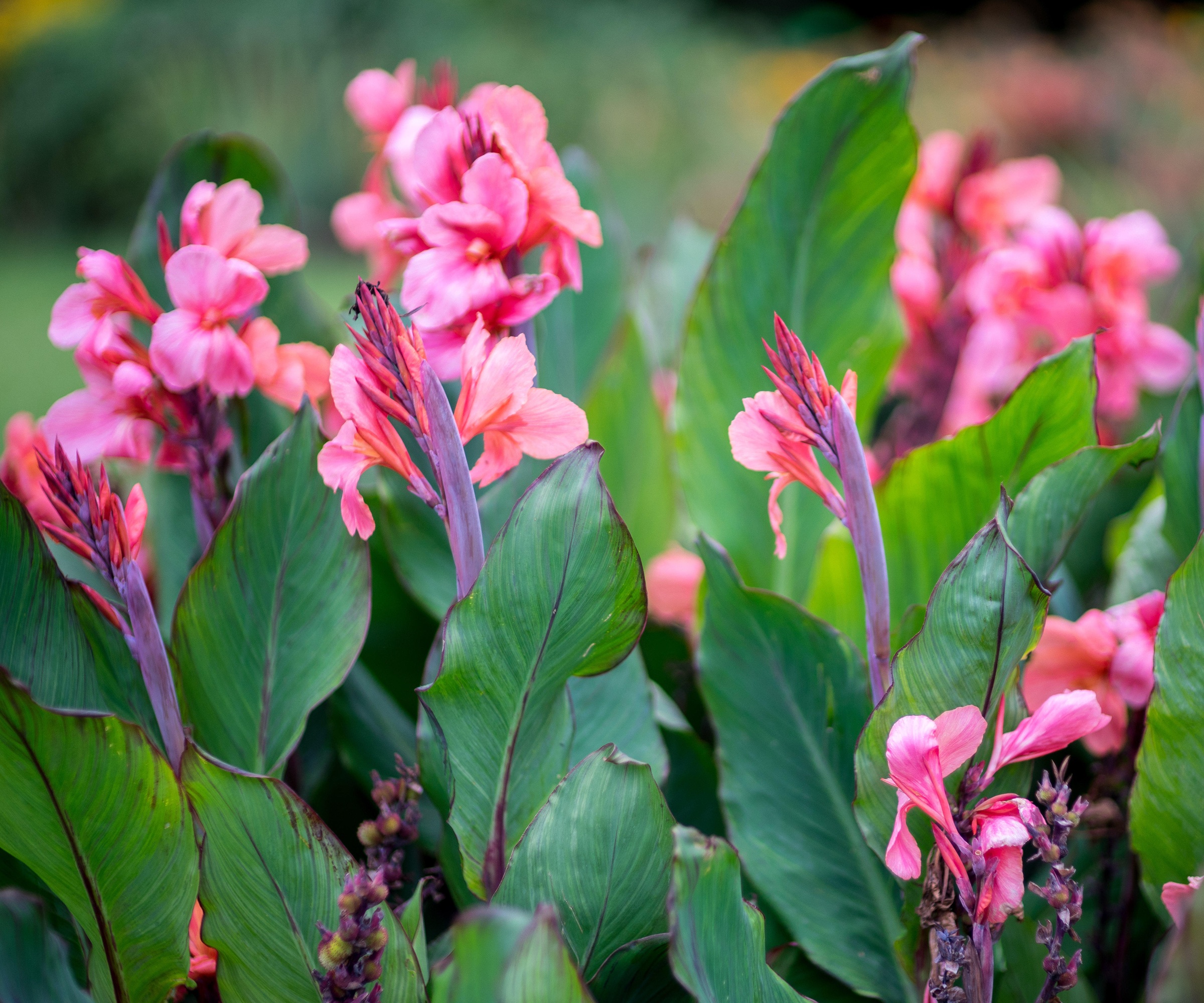
‘One of my favorite summer blooming bulb plants, the canna lily is fast growing, showy and very low maintenance once established,’ says plant expert Katie Sunderlage. ‘The perfect plant to grow as a backdrop to a flower bed or as a specimen plant in a pot, they can be planted directly in the ground where hardy or in a large, pot with drainage in colder climates.’
Easy to grow outside in USDA hardiness zones 7-11, they can also be treated as annuals in cooler zones and moved temporarily indoors during the winter.
Widely tolerant of wet to moist soil and are happy in full sun, these exotic plants quickly produce a mass of underground rhizomes, which can easily be lifted and split into individual sections to form new plants.
The large, non-evergreen foliage is hugely decorative too. Either plain or striped there’s a huge painterly palette of colors to choose from including burgundy, pink, lime, cream and crimson. These plants are also useful as a spectacular garden privacy screening option too.

Operations Manager at Holland Group, managing the customer service department and purchasing. Katie has been in the green industry since 2005 in the Greater Milwaukee area, earning her degree in Horticulture in 2008. She has been able to share her love for plants working in multiple garden centers, in sales positions and most recently in an online retail platform at Holland Group.
Crinium
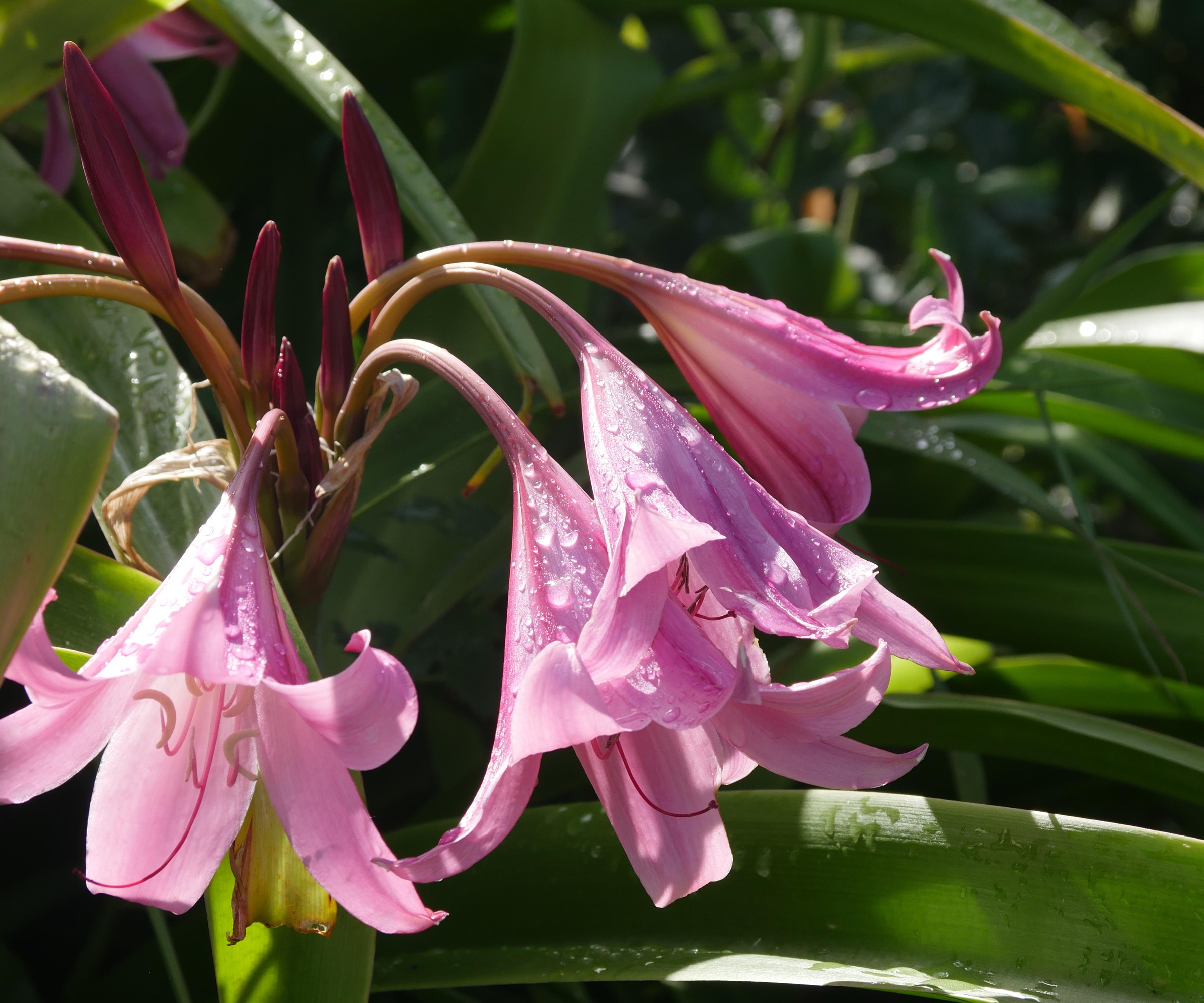
Huge bulbs that dependably send up tall showy blooms for very little effort are always winners in our gardens. Crinum or swamp lilies are native to South America and South African sub-tropical areas and although they dislike permanently sitting in waterlogged soil, they will tolerate a wide range of conditions.
‘These stalwarts serve as the ever reliable, readily blooming, large foundations of summer gardens,’ says bulb hunter and expert Chris Wiesinger. ‘With a little blanket of mulch or organic matter, many can handle temperatures well below freezing.
A focal point of the summer garden, from August to mid fall, the trumpet shaped blooms on tall stems come in various shades of white, pink, and burgundy. Chris suggests, ‘For fragrance and blooms from spring to fall, try the refined 'Mrs. James Hendry' and for sturdy stalks and vibrant pink flowers, try the 'Ellen Bosanquet.'’
Crinum have bold foliage, so mix with other summer blooming perennials that bring a texture variation and act as a skirt to the lower areas of the bulbs. In formal gardens, they are often behind a low trimmed structure so as to not see their base. ‘Plant these large bulbs with most of the bulb just under the soil surface with the elongated neck above ground. Don't be afraid to trim back foliage that might start to brown in the late summer hot sun - you won't hurt the crinum.’

Chris Wiesinger founded The Southern Bulb Company in 2004 along with several friends in an attempt to recapture that which was once lost to the Southern gardener: bulbs that thrive in warm climates. Chris began collecting bulbs when he was young. He used his bulb passion for a college project at Texas A&M which then grew into a lifestyle and business. Chris sought out heirloom and rare flower bulbs like the red spider lily and is author of the The Bulb Hunter which details his life as a bulb collector and farmer.
Rain lilies
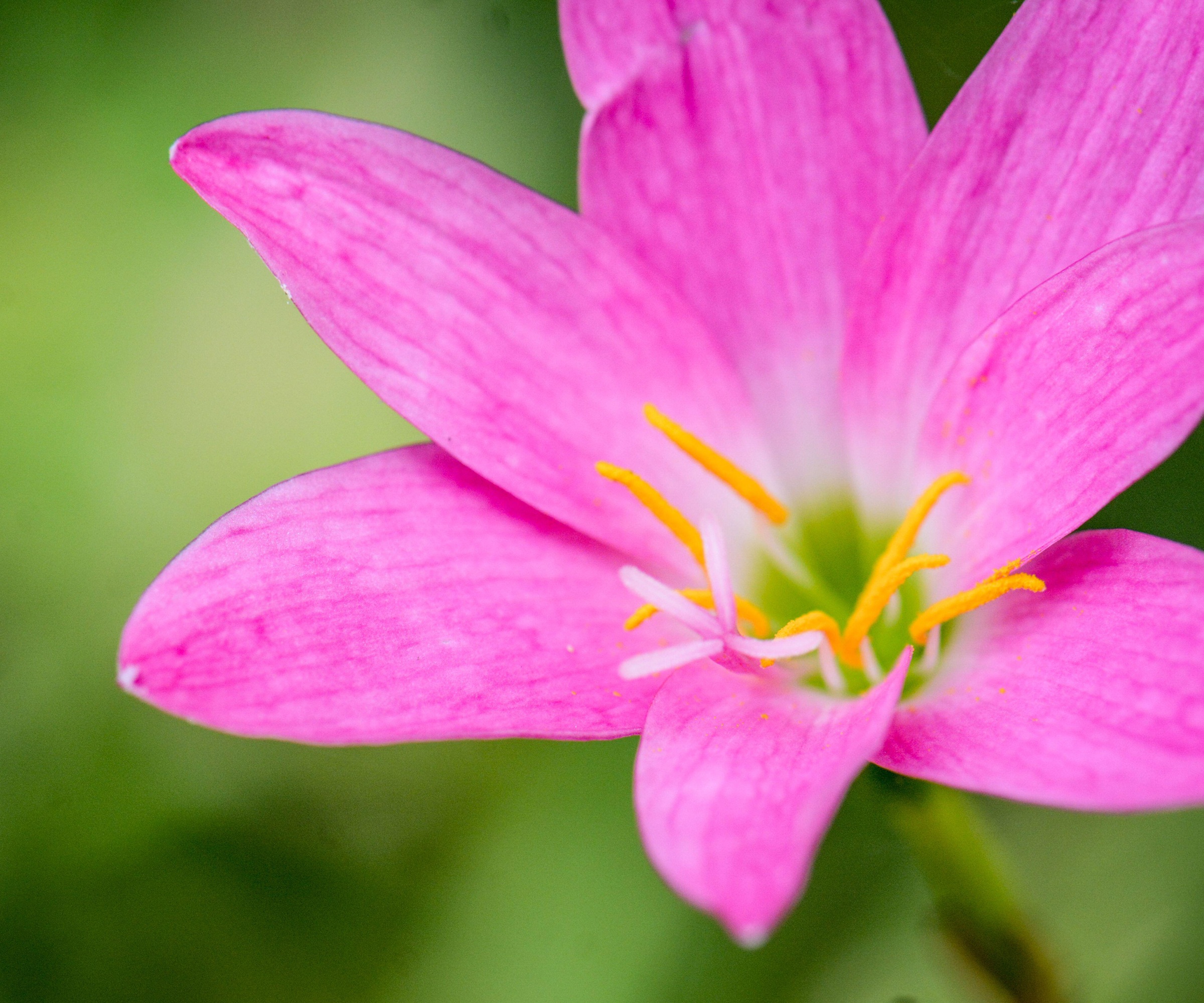
Triggered to open by rainfall, these upright, white starry blooms add a magical touch to any garden asking for very little attention in return. Emerging from late spring to early summer, they are a captivating and easy choice for both beginners and seasoned gardeners.
‘Rain lilies or Zephyranthes minuta have often been likened to old friends - they appear unexpectedly and always bring joy when they do,’ say Chris. ‘Easy to grow, heat-tolerant, bloom repeatedly, and dazzle with their bright colors, they are perfect for borders and look stunning in pots.’
A must for growing outside in USDA zones 7-10, they will thrive in free draining or sandy soil in a spot that receives a daily minimum of six hours of daylight.
‘The bulbs are perennials and will return each year, but for first plantings, place these small bulbs about an inch or two below the soil surface,’ advises Chris. ‘Their 6–8-inch-high blossoms create striking displays along garden edges or tucked in front of neatly trimmed boxwood hedges. They’re equally impressive in pots, transforming your patio into a vibrant space for summer gatherings.’
Grape Hyacinth
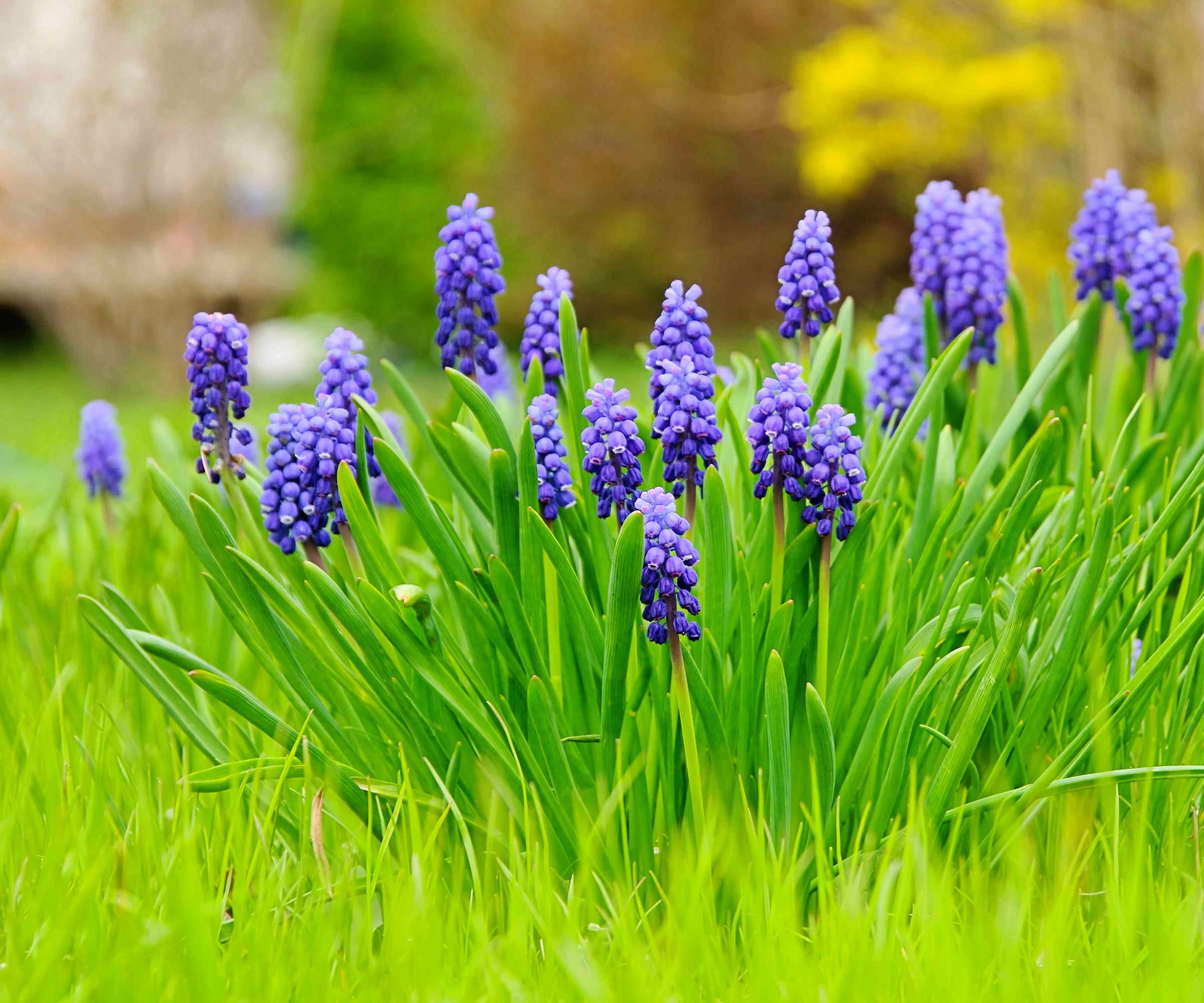
Perhaps the easiest bulb of them all to grow, grape hyacinths, or muscari, are a dazzling sight in early spring. Like miniature bejewelled spires usually in white and varying hues of blue, they have the amazing ability to self-seed and naturalize, forming floral carpets in lawns, borders, across paving and containers with absolutely no help at all.
Perfect for enlivening the bare, redundant spaces under deciduous trees and shrubs, these bulbs will perform long before the leafy canopy is fully open, making them a useful garden addition that needs no upkeep.
Standout varieties include the fascinating two-toned Muscari latifolium, the pure Muscari Aucheri 'White Grape' and the head turning, golden yellow Muscari macrocarpum 'Golden Fragrance'. Looking for further inspiration check out the Delft Blue Grape Hyacinth mix from Walmart and Muscari armeniacum bulbs, also available at Walmart.
Gladioli

Looking for fuss-free yet spectacular summer flowering bulbs, then embrace the gladioli. These flat, doughnut-like corms may not look much when bought from the garden centre, but they seldom fail to produce stately flower spires year-after-year. Available in a huge array of soft and vibrant shades, with pared back and frilled blooms, there’s a glad for every taste, but it’s the small flowering varieties such as Gladioli byzantinus that really are a cinch to grow.
Requiring no staking – unlike the taller varieties - they handle strong winds and exposed sites with ease, and you will rarely find any broken flower stems. Smaller and more compact they also look more in proportion with other bulbs and herbaceous perennials.
‘Gladiolus are considered very easy to grow and thrive in many different climates. Although hardy in warmer climates, there are a number of varieties including hybrids and gladiolus nanus that are hardy in more colder climates as well,’ says Katie Sunderlage. ‘Perfect as a backdrop in a sunny garden bed or as a focal point in a container, they have long, sword like foliage and upright stalks of blooms that will open in succession starting from the bottom to the top.’
Corms can be planted in spring and will bloom in mid to late summer and early fall. ‘You can plant corms every two weeks during the spring to offset blooms and have them last longer into the season,’ adds Katie. Gladiolus prefer full sun and well-drained soil.
Once you've discovered just how easy flower bulbs are to grow, why not widen your gardening experience and try some of the more unusual bulb varieties. You also might find our expert guides on how deep to plant bulbs and which bulbs not to plant in pots handy.
Sign up to the Homes & Gardens newsletter
Design expertise in your inbox – from inspiring decorating ideas and beautiful celebrity homes to practical gardening advice and shopping round-ups.

Journalist Jill Morgan has spent over 20 years writing and editing gardening, interior and property features. Titles she has worked on include The English Home, House Beautiful, Ideal Home, Houzz and Modern Gardens and she writes regularly for H&G as a Contributing Editor. Whilst she is a dab hand at renovation projects and DIY, she is happiest when out digging in the garden or planning a new border.
You must confirm your public display name before commenting
Please logout and then login again, you will then be prompted to enter your display name.
-
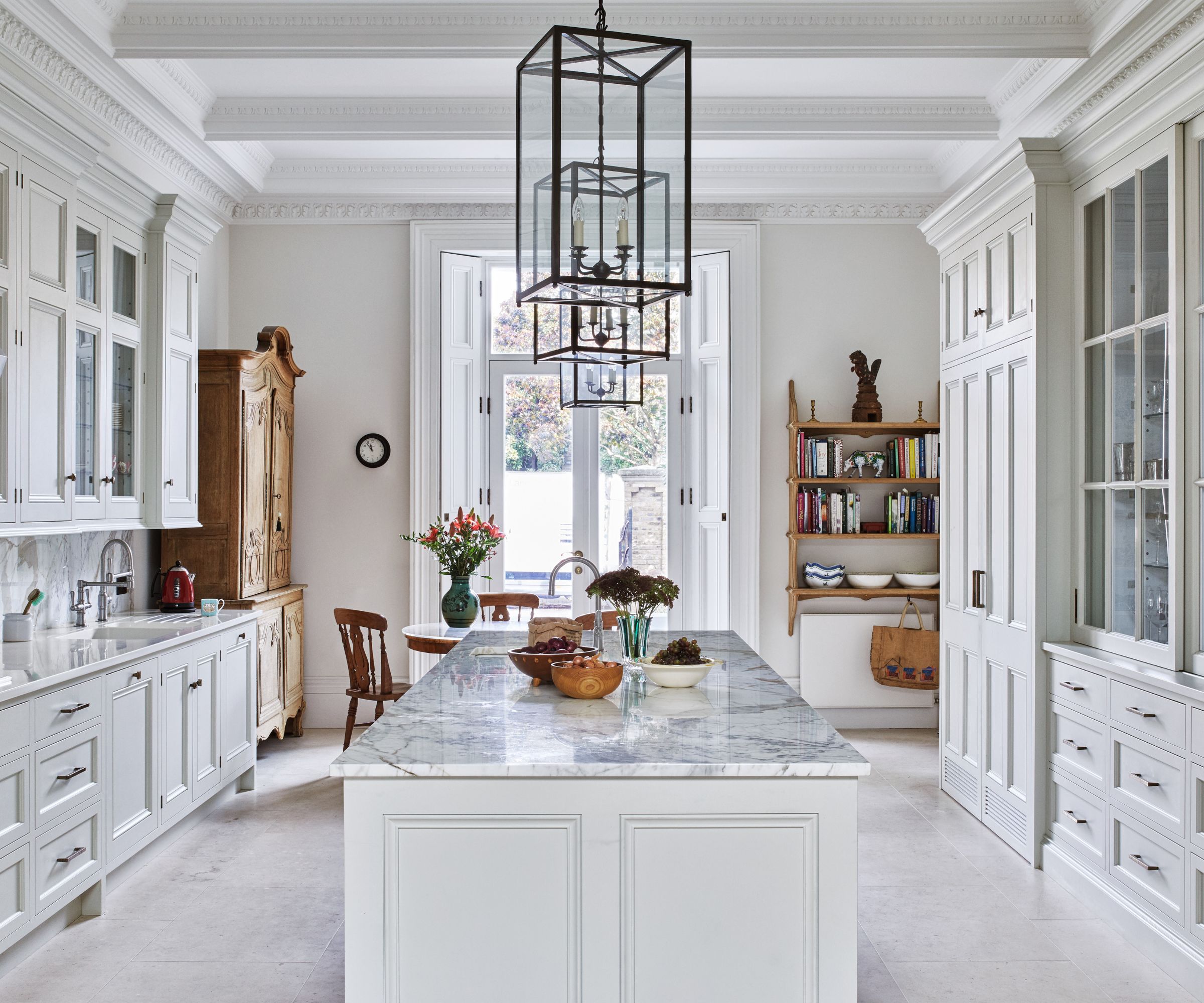 Are you making the most out of the estate sales in your area? These are the 5 most valuable items you should be shopping for
Are you making the most out of the estate sales in your area? These are the 5 most valuable items you should be shopping forVintage lovers and antique experts share the objects you should always look out for when you're exploring an estate sale
By Eleanor Richardson
-
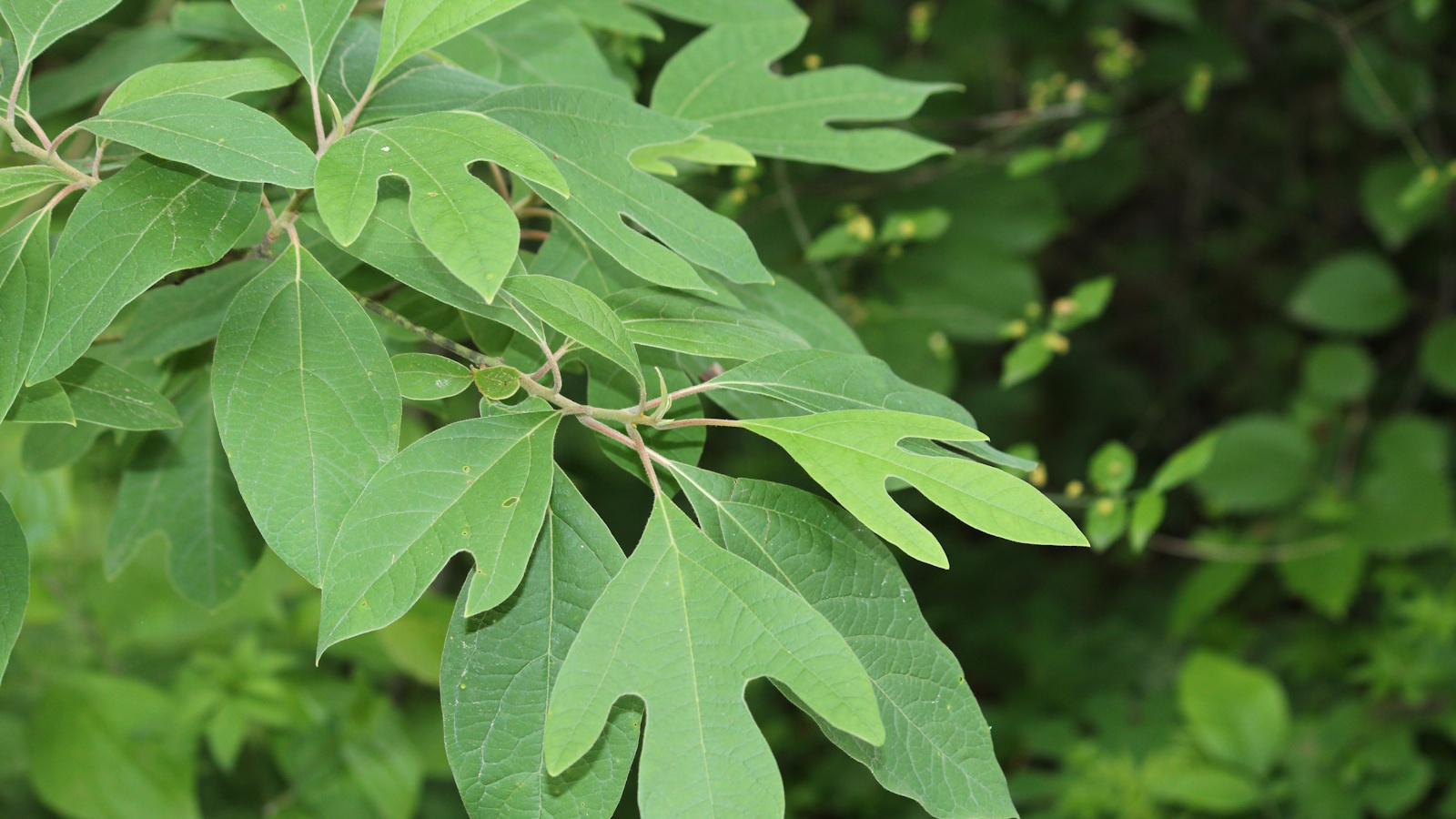 How to grow sassafras – for a low-maintenance native tree that can even be planted in shady yards
How to grow sassafras – for a low-maintenance native tree that can even be planted in shady yardsFor an easy-to-grow North American tree, you will not find much better than sassafras
By Thomas Rutter